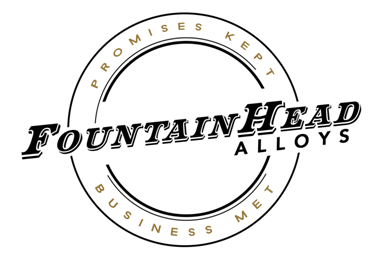Duplex stainless steels offer an excellent combination of strength and corrosion resistance, meaning you can significantly reduce material thickness and cost in a host of applications. Duplex innovation is unmatched in the industry and our offering covers a full palette of duplex stainless steels for use in diverse industries and applications.
The high mechanical strength of duplex grades is a result of the duplex microstructure and the alloying with nitrogen. This high strength gives opportunities for reducing both weight and cost as a thinner material can be used. Low nickel content of the duplex grades makes them price stable.
The duplex grades LDX 2101® and 2304 are referred to as lean duplex grades. Typical applications are storage tanks, bridges, water heaters and reinforcement bars. The corrosion resistance is comparable to the standard austenitic grades like 4301 and 4404 respectively or high alloyed ferritics like 4521.
Grades 2507 and 4501 are regarded as super duplex grades. They are highly alloyed and have a corrosion resistance comparable to high performance austenitics like 254 SMO®. Typical applications for super duplex are desalination plants, seawater systems, flue-gas cleaning, umbilicals, storage tanks and pressure vessels.
By lowering total material weight, you also lower transportation and assembly costs, reducing environmental impacts even further – making duplex stainless steel a genuine material of the future.
A steel to which modest amounts of one or more alloying elements (other than carbon) such as Cr, Ni, or Mn have been added. Alloy steels are workhorses of industry because of their economical cost, wide availability, ease of processing, and good mechanical properties. Alloy steels are generally more responsive to heat and mechanical treatments than carbon steels.
Heat Treated Alloy Steel is available in both Annealed and Normalized. To learn more about Annealing and Normalizing
Mechanical properties
The mechanical and physical properties are beneficial characteristics of Outokumpu Duplex. The mechanical strength is superior compared to austenitic or ferritic stainless steels, and the physical properties offer new possibilities. This is a clear advantage for structural applications, such as pressure vessels and beam constructions.
Pressure vessel approvals
Outokumpu duplex grades 1.4362 (2304), 1.4462 (2205), 1.4501 (4501) and 1.4410 (2507) are listed in EN 10028-7. European material approval EAM 0045-01:2012/01 for LDX 2101® (1.4162) is available for cold rolled 0.5-6.4 mm and hot rolled 3.0-10.0 mm. (LDX 2101® is partly listed in EN 10088). Work are in progress for European and ASME approvals of LDX 2404®. In ASME II-D 2007 (Metric) edition grades S31803 (2205), S32304 (2304) and S32750 (2507) are listed for general use between -30°C to +325°C. Data for LDX 2101® can be found in ASME code case 2418-1.
Temperature and embrittlement
Duplex steels are more prone to precipitation of intermetallic phases, nitrides and carbides than corresponding austenitic steels, causing embrittlement and reduced corrosion resistance. The formation of intermetallic phases such as sigma phase occurs in the temperature range 600-950°C and decomposition of ferrite occurs in the range 350-525°C (475°C embrittlement). Exposures at these temperatures should therefore be avoided. In proper welding and heat treatment the risk of embrittlement is low. However, certain risks exist, for example at heat treatment of thick sections, especially if the cooling rate is low. Due to the risk of embrittlement, duplex steels should not be used at temperatures above 250-325°C (See Figure 2). The maximum temperature depends on grade and the design rules being used.
High energy absorption
The combination of high strength and ductility gives Outokumpu Duplex a very good ability to absorb energy. This makes it a perfect material for applications like blast walls on offshore platforms and car body components
Good fatigue strength of base material
The high tensile strength of Outokumpu Duplex also implies high fatigue strength in the base material. The fatigue strength of the duplex steels follows the proof strength of the material. Our technical experts can provide you with more detailed information, if needed. For welds, the benefit of the high fatigue strength of the parent or base material is limited. The fatigue strength is, like other materials, reduced by unfavorable weld geometry, residual stresses, distortions and weld defects.
Physical properties: new opportunities
Compatible with carbon steel
Outokumpu Duplex grades have a lower thermal expansion ratio (approximately 13 × 10-6/°C) and higher thermal conductivity than austenitic steels. This means that there are fewer problems with temperature expansions caused by connecting Outokumpu Duplex with carbon steels. Duplex is a good alternative for lining carbon steel vessels operated with large cyclic temperature variations.
Magnetic properties
Duplex stainless steels are more magnetic than austenitic grades due to higher ferrite content. But for safety reasons magnets shall not be used to lift duplex sheets.
Corrosion resistance in a wide range of environments
The corrosion resistance of Outokumpu Duplex is generally very good. The resistance is especially good in environments such as halide containing media, oxidising acids, and hot alkaline solutions. This means that, for example, heat exchangers, water heaters, offshore equipment, storage tanks, sulphate pulp digesters, black liquor evaporators and flue gas cleaning equipment greatly benefit from the material properties of duplex steels.
Uniform corrosion
The uniform corrosion resistance is generally considered good if the corrosion rate is less than 0.1 mm/year. Thanks to their high chromium content, duplexes offer excellent corrosion resistance in many media, especially in alkaline solutions.
Pitting and crevice corrosion:
heat exchangers, water heaters, offshore equipment, storage tanks etc. In chloride solutions LDX 2101® has better resistance than 4307 and in some cases as good as 4404. Grade 2304 is in most cases equivalent to 4404, while the other more highly alloyed duplex steels show even better resistance. The resistance to pitting and crevice corrosion is often illustrated by the pitting resistance equivalent (PRE) for the material. The most commonly used formula for PRE is: PRE = %Cr + 3.3 x %Mo + 16 x %N
The PRE value can be used for the ranking of different stainless steels, see Table 7. A more in depth way to rank steels is measuring the Critical Pitting corrosion Temperature (CPT). Outokumpu uses an electrochemical method, ASTM G150, based on the in-house developed Avesta Cell, see Figure 3.
Chloride and sulphide induced stress corrosion cracking: boreholes and gas wells etc.
All duplex grades are much more resistant than the standard austenitic grades to chloride induced stress corrosion cracking (SCC). Thus, the duplex grades can tolerate higher chloride contents at elevated temperatures. In the presence of hydrogen sulphide and chlorides (e.g. sour conditions in bore holes and gas wells) the risk of stress cracking, at low temperatures, increases. In these environments Outokumpu Duplex grades, especially 2205 and 2507, have demonstrated good resistance.
Corrosion fatigue and intergranular corrosion
The combination of high mechanical strength and very good resistance to corrosion gives duplex steels superior corrosion fatigue strength. Due to the duplex microstructure and low carbon content, the duplex grades have a good resistance to intergranular (intercrystalline) corrosion.
Erosion corrosion
In general, stainless steel offers good resistance to erosion corrosion. Duplex grades are especially good due to their combination of high surface hardness and good corrosion resistance.
Galvanic corrosion
Galvanic corrosion may occur when two dissimilar metals are electrically connected (as by welding) in an electrolyte. Stainless steel is in most cases more nobler than other metallic materials. The more noble metal is protected while the less noble metal is more severely attacked by corrosion. The electrolyte, area ratio, and the less noble metal determines the corrosion rate. Stainless steel in contact with carbon steel rebars fully cast in concrete does not cause galvanic corrosion of the carbon steel reinforcement due to the high pH in concrete. Galvanic corrosion does not occur between different grades of stainless steels as long as both grades are in passive state.
Atmospheric corrosion
Atmospheric corrosion is not a unique form of corrosion, but a collective term to denote the corrosion of surfaces in the atmosphere. When stainless steel is exposed to an aggressive atmosphere it is primarily stained. This is sometimes referred to as tea staining, but it can also be attacked by localised corrosion with time, particularly at high chloride levels as in marine atmospheres. Today there are duplex grades available for any type of atmosphere.
The Outokumpu Corrosion Handbook
For more information on corrosion and corrosion resistance in different media, see further the Outokumpu Corrosion Handbook. You can obtain your own copy from your local sales office.

